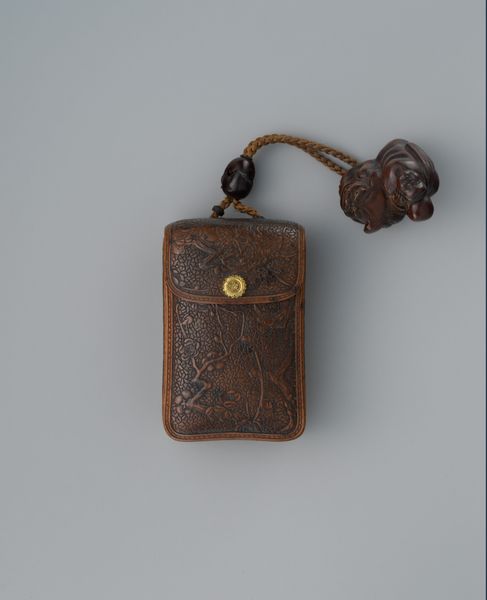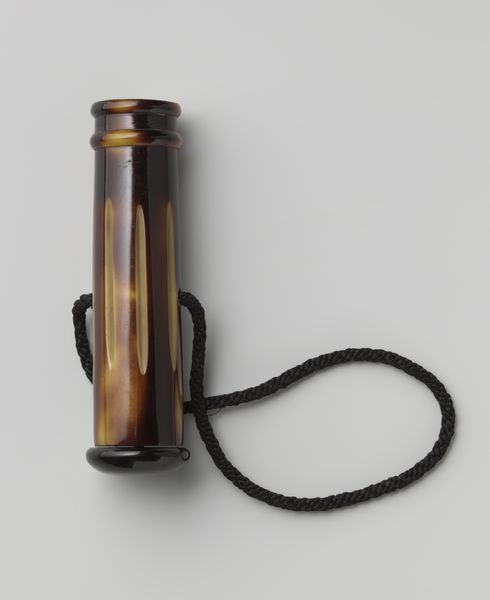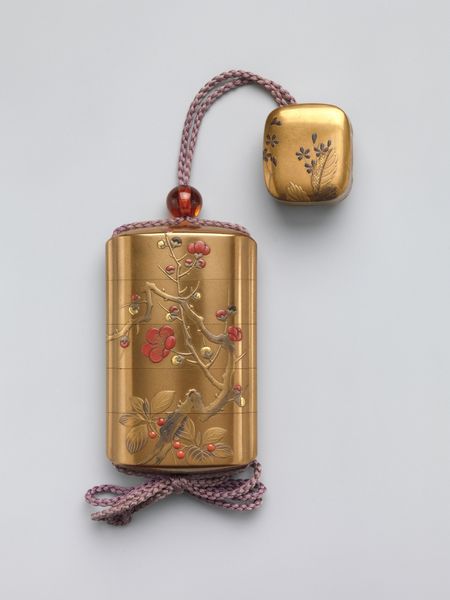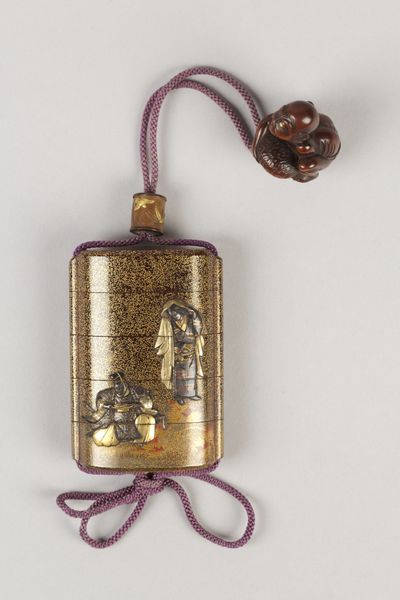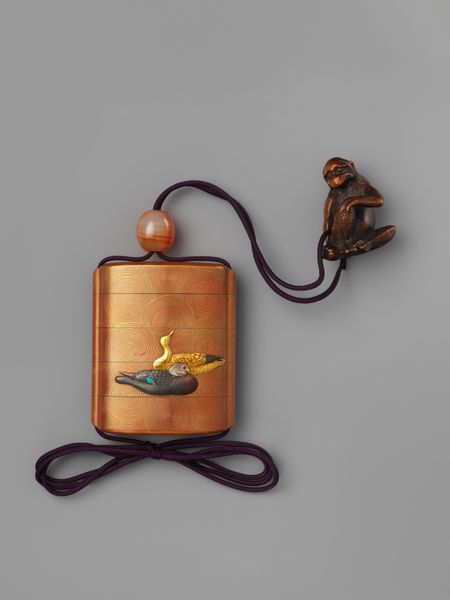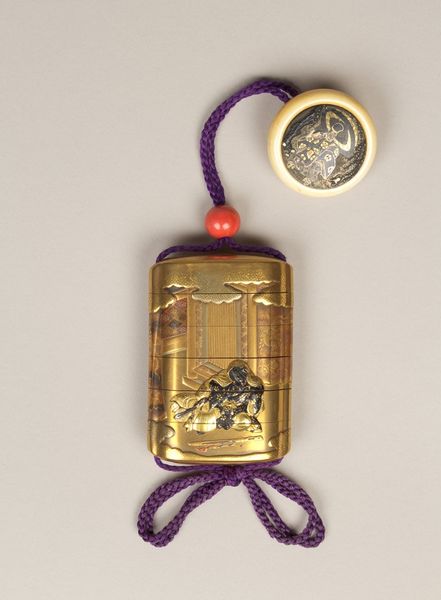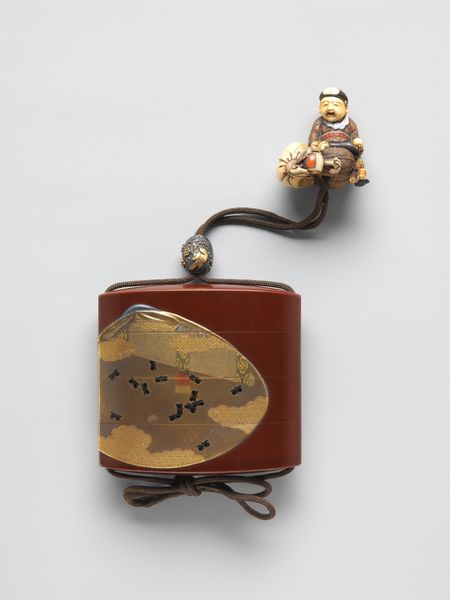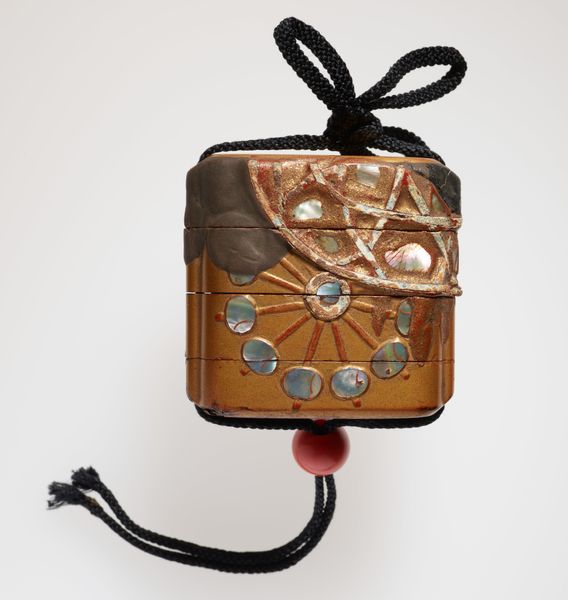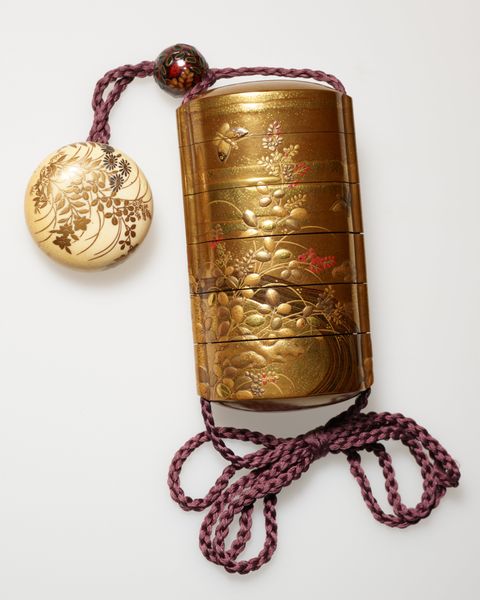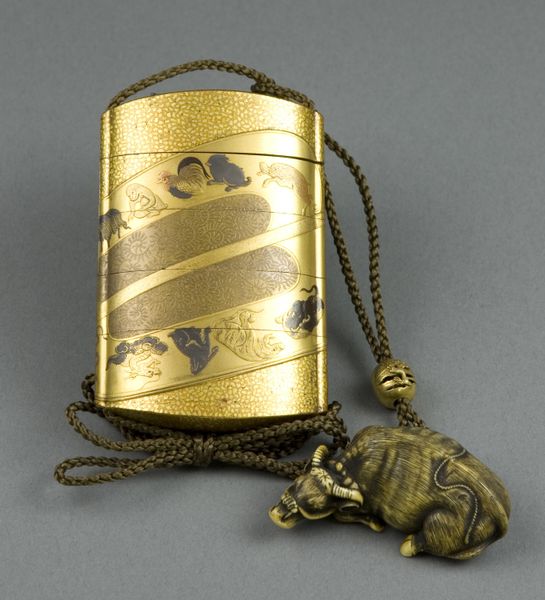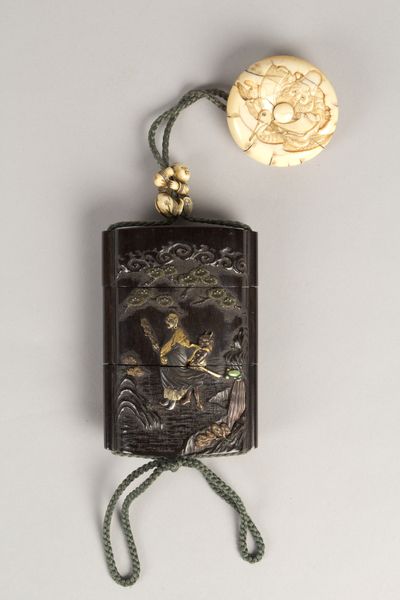
Four-case inro showing kusudama with long ribbons c. 19th century
0:00
0:00
carving, ceramic
#
carving
#
asian-art
#
ceramic
#
ukiyo-e
#
ceramic
#
decorative-art
#
miniature
Dimensions: 2 15/16 × 2 1/8 × 1 1/8 in. (7.46 × 5.4 × 2.86 cm)
Copyright: Public Domain
This inro, or traditional Japanese case for holding small objects, was made by the Kajikawa School, famous lacquerware artisans. The inro is crafted from multiple interlocking sections, coated with lacquer, a sap-based material that is built up in many layers, then polished to a fine sheen. Observe the smooth surface and subtle variations in color, achieved through skillful manipulation of the lacquer. This involved painting, sprinkling metal powders, and carving. The decoration shows a kusudama, a ball of flowers, with long ribbons, patterns that were initially reserved for the aristocracy. What I find interesting is that the surface decoration isn't just for show. The inro is a complex object that required the labor of many skilled hands, to create this small but luxurious item. It challenges the distinctions between art, craft, and design, inviting us to appreciate the artistry embedded in everyday objects, and the role of artistry and craft in the construction of personal identity.
Comments
minneapolisinstituteofart almost 2 years ago
⋮
This inrō is decorated with various symbols of health and prosperity in takamaki-e over a kinji background. The front of the container shows the kanebukuro, an inexhaustible purse of gold that represents wealth. This is one of ten items associated with good fortune and carried by Hotei, one of the Seven Lucky Gods. The purse is surrounded by chrysanthemums, which blossom year round and are thus associated with longevity. On the back is a bundle of flowers known as a kusudame, which was placed over the doorway of residences during the Boy’s Festival, and were thought to bring good health for the rest of the year.
Join the conversation
Join millions of artists and users on Artera today and experience the ultimate creative platform.

